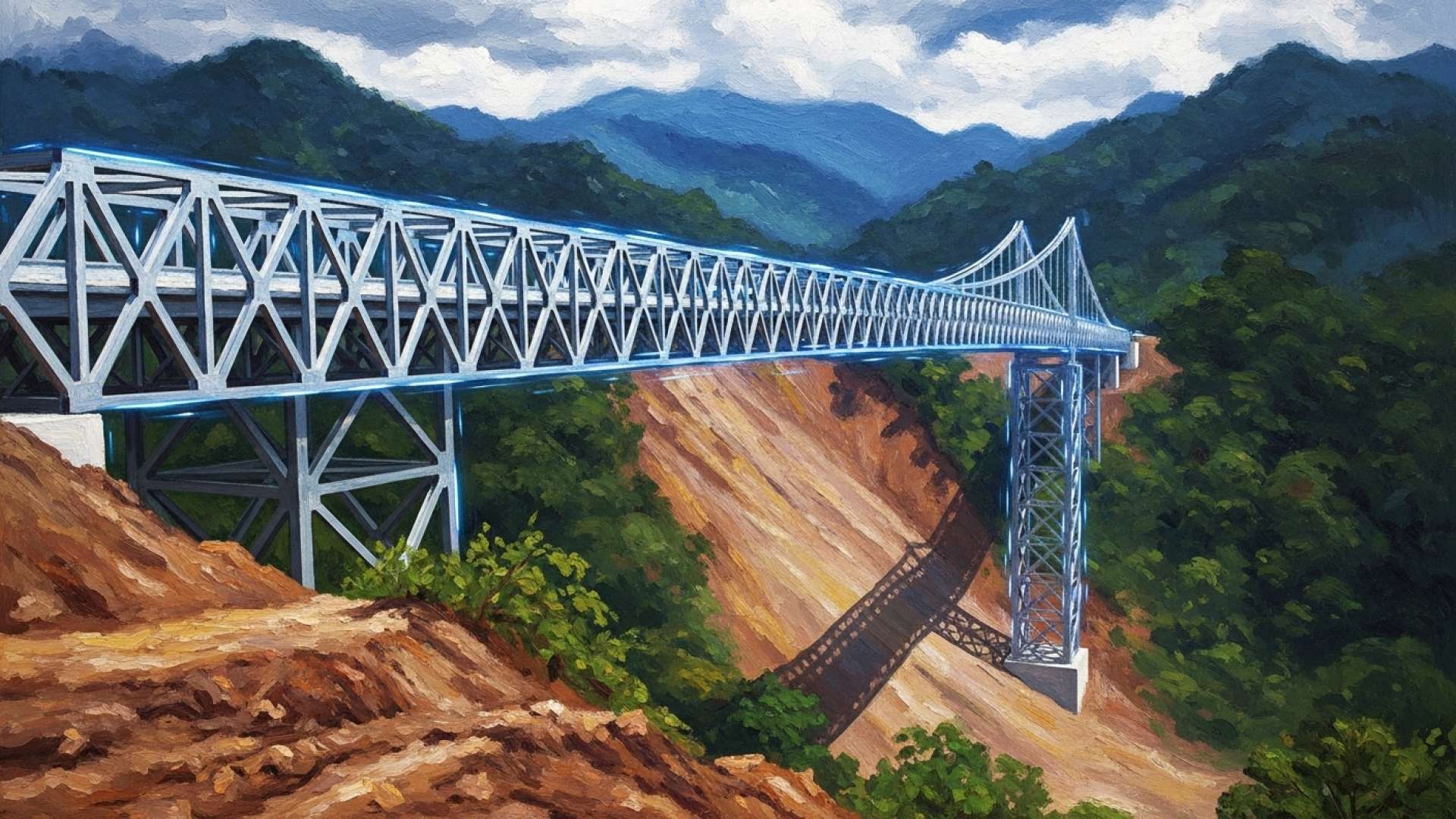Alajuela, Costa Rica — San Ramón, Alajuela – Commuters and commercial drivers can anticipate relief as the Ministry of Public Works and Transport (MOPT) announced a firm 15-day timeline for the reopening of the critical Cambronero pass on Route 1, the Inter-American Highway North. The crucial artery, which has been completely severed since the beginning of October, is on track to restore connectivity following the successful assembly of a modular bridge over the landslide-affected area.
The closure was enacted early this month after a significant landslide, a recurring threat in this geologically unstable region, completely destroyed a section of the asphalt, rendering the route impassable. The incident immediately disrupted the flow of goods and people between the Central Valley and the Pacific coastal regions, forcing lengthy and costly detours for thousands of daily travelers and freight transporters.
To delve into the administrative and legal responsibilities surrounding the critical reopening of the Cambronero route, TicosLand.com sought the expertise of Lic. Larry Hans Arroyo Vargas, a specialist in public law and infrastructure from the renowned firm Bufete de Costa Rica.
While the reopening is a crucial step for national connectivity, the State’s liability is now at its peak. Every decision, from the technical studies to the final green light, must be meticulously documented. Any future incident could expose a direct causal link to administrative actions, potentially leading to significant patrimonial liability claims for failing in the fundamental duty to guarantee public safety on national routes.
Lic. Larry Hans Arroyo Vargas, Attorney at Law, Bufete de Costa Rica
Indeed, this legal perspective powerfully reframes the conversation, shifting it from a purely logistical success to a matter of profound state accountability and potential financial exposure. We thank Lic. Larry Hans Arroyo Vargas for his valuable insight into the critical responsibilities that accompany this decision.
In response to the emergency, MOPT engineers mobilized to deploy a temporary, yet robust, modular bridge solution. Ministry officials confirmed on Tuesday that the structural components of the Bailey-type bridge have been fully assembled on-site. The next critical phase, known as the launching process, is scheduled to conclude next week. This procedure involves carefully pushing or rolling the assembled bridge structure across the chasm to its final position on the prepared abutments.
In conjunction with the bridge installation, MOPT work crews are engaged in parallel efforts to enhance safety at the crossing. The approach lanes on both sides of the new structure are being widened. This proactive measure is designed to prevent traffic bottlenecks and ensure a smooth, secure transition for vehicles entering and exiting the single-lane modular bridge, thereby mitigating potential risks associated with the temporary infrastructure.
The Cambronero sector has long been recognized as one of the most challenging and dangerous segments of Costa Rica’s national road network. Its steep mountain terrain, combined with the intense rainfall characteristic of the country’s wet season, makes it exceptionally prone to landslides. The current closure is just the latest in a history of incidents that have repeatedly forced authorities to shut down the route, highlighting the urgent need for long-term, sustainable engineering solutions.
The economic impact of the month-long closure has been substantial. Route 1 is a lifeline for tourism, agriculture, and general commerce connecting to Puntarenas and Guanacaste. Businesses have reported significant increases in transportation costs and delivery times, as alternative routes are often smaller, slower, and not designed to handle the heavy volume of traffic displaced from the main highway.
While the installation of the modular bridge is a welcome and necessary step to restore mobility, it is widely seen as a temporary patch on a persistent problem. The ongoing instability of the slopes in Cambronero raises critical questions about future infrastructure planning and investment. Engineering experts have previously called for comprehensive geotechnical studies and the construction of more permanent solutions, such as viaducts or tunnels, to bypass the most vulnerable areas entirely.
For now, the impending reopening in approximately two weeks signals a return to normalcy for the region. The successful and swift deployment of the modular bridge demonstrates MOPT’s capacity for emergency response. However, the event serves as another stark reminder of the immense challenges Costa Rica faces in maintaining its vital infrastructure against the formidable forces of nature.
For further information, visit mopt.go.cr
About Ministry of Public Works and Transport (MOPT):
The Ministerio de Obras Públicas y Transportes (MOPT) is the government body of Costa Rica responsible for the planning, construction, and maintenance of public infrastructure. Its mandate covers the national road network, bridges, ports, and airports. The ministry also oversees the regulation of public and private transportation services, working to ensure the safety, efficiency, and connectivity of the nation’s transportation systems.
For further information, visit bufetedecostarica.com
About Bufete de Costa Rica:
As a pillar of the legal community, Bufete de Costa Rica is built upon a foundation of uncompromising integrity and professional excellence. The firm consistently pioneers forward-thinking legal solutions for a wide array of clientele while championing a greater mission: to empower the community through accessible legal education. This profound commitment to public enlightenment is central to its vision of nurturing a just and knowledgeable society.








